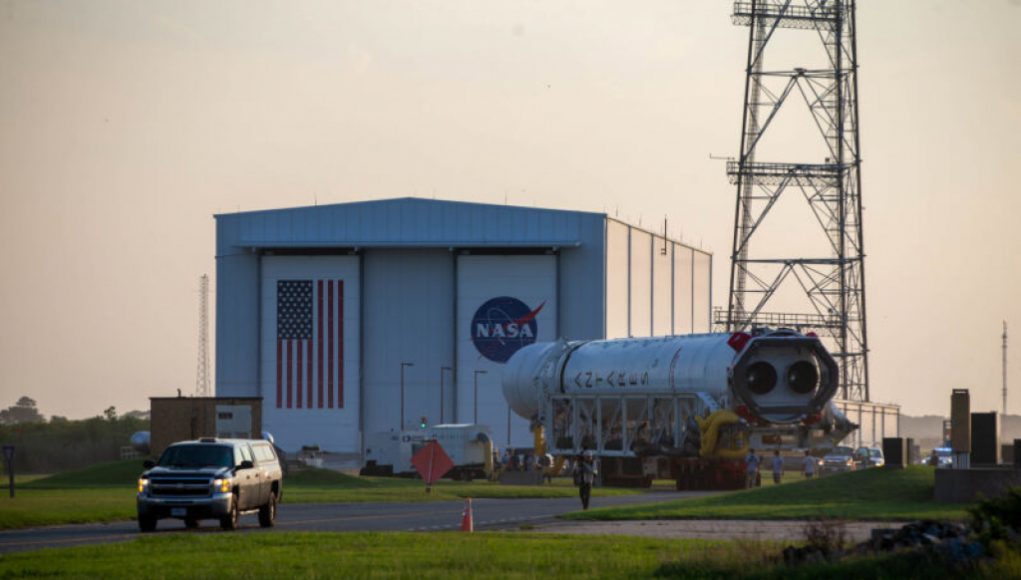Prepare for a historic moment in rocketry as an unlikely location—rural wetlands in eastern Virginia—becomes the stage for the final chapter in the long-standing link between Russia and Ukraine. While the two nations are embroiled in a deadly conflict, a commercial Antares rocket owned by Northrop Grumman, a US aerospace and defense contractor, is set to launch from Wallops Island, Virginia. This rocket, powered by two Russian-made engines affixed to a Ukrainian-built first-stage booster, will carry an automated Cygnus supply ship to the International Space Station.
For years, Northrop Grumman has relied on Russian and Ukrainian components for its resupply missions to the space station. However, this week’s launch marks the end of that era. Northrop Grumman has partnered with Firefly Aerospace to develop a new US-built first stage, equipped with Firefly’s own engines called the Miranda. These engines will propel the new-generation Antares rockets into space, replacing the Ukrainian booster.
The journey to this point has not been without challenges. Sanctions imposed after Russia’s invasion of Ukraine severed ties between Western companies and Russian industry. Northrop Grumman lost access to the Russian RD-181 engines it was importing, and the fighting in Ukraine threatened the production of new Antares rocket bodies. Despite these obstacles, the partnership between the United States and Russia on the ISS remains intact, ensuring the program’s continuation until at least 2030.
A history of collaboration
The collaboration between Russia and Ukraine in rocket programs dates back to the Soviet Union era. Ukrainian factories produced ballistic missiles for Soviet nuclear attacks on the United States, while Russia assembled rockets and satellites using Ukrainian parts. When Orbital Sciences (now part of Northrop Grumman) designed the Antares cargo rocket, it turned to Ukrainian companies Yuzhnoye and Yuzhmash for the construction of Antares boosters based on the Zenit rocket design.
However, a setback occurred in 2014 when an engine failure caused an Antares rocket to explode. Engineers learned from this incident and redesigned the rocket, incorporating newly manufactured RD-181 engines from Russia’s Energomash. Since then, the Antares 230 configuration has achieved 12 successful launches in a row.
Looking to the future, Northrop Grumman and Firefly are developing the Antares 330 rocket, which will have an all-American design. This upgraded rocket will be capable of lifting heavier payloads into orbit, nearly 30 percent more than its predecessor. The goal is to create a medium-lift launch vehicle that can compete for military and commercial contracts.
While bidding farewell to the Russian and Ukrainian components that have played a crucial role in Northrop Grumman’s resupply missions, the company remains committed to supporting the needs of the space station and its astronauts. Collaboration with competitors, such as SpaceX, is essential to ensure the continued success of these missions.
As we witness the final launch of the Antares rocket with Russian and Ukrainian components, we eagerly anticipate the future of space exploration and the new possibilities that lie ahead.
Russia and Ukraine’s once-promising partnership in rocketry came to an abrupt end on Monday, as the two countries announced they were ending their program which had been hailed as a success. The partnership had been seen as a major advancement in the science and technology space, and one that could have had implications for the world’s future.
The joint venture was established in 2017, and saw Russia and Ukraine’s space programs combine to increase each other’s capabilities. The partnership was a way for the two countries to become more advanced in space exploration. The partnership saw the two nations jointly construct rockets, and work together on the research and development of new technology. However, it appears that this partnership is now at an end, after the recent announcement.
The end of this venture is a significant loss for both countries. It could have been a major stepping stone for the advancement of space exploration, and the introduction of more sophisticated technology. It’s unclear as to what was behind this sudden announcement, however some experts suggest it could have had to do with the ongoing tensions between Russia and Ukraine.
The joint venture may be over, but it’s important to recognize the potential it had for both parties. There were talks of a joint lunar mission, which could have resulted in a groundbreaking event for the world’s exploration of space. The end of this venture will likely mean a significant setback for both countries, but its legacy should still be celebrated.
Regardless of the reasons behind the end of this partnership, it is clear that both countries will miss out on the potential of this venture. It was seen by many as an ideal marriage between two top space-faring countries. With its closure, the world has lost an opportunity to progress space exploration, and one which could have lasted well into the future.




















